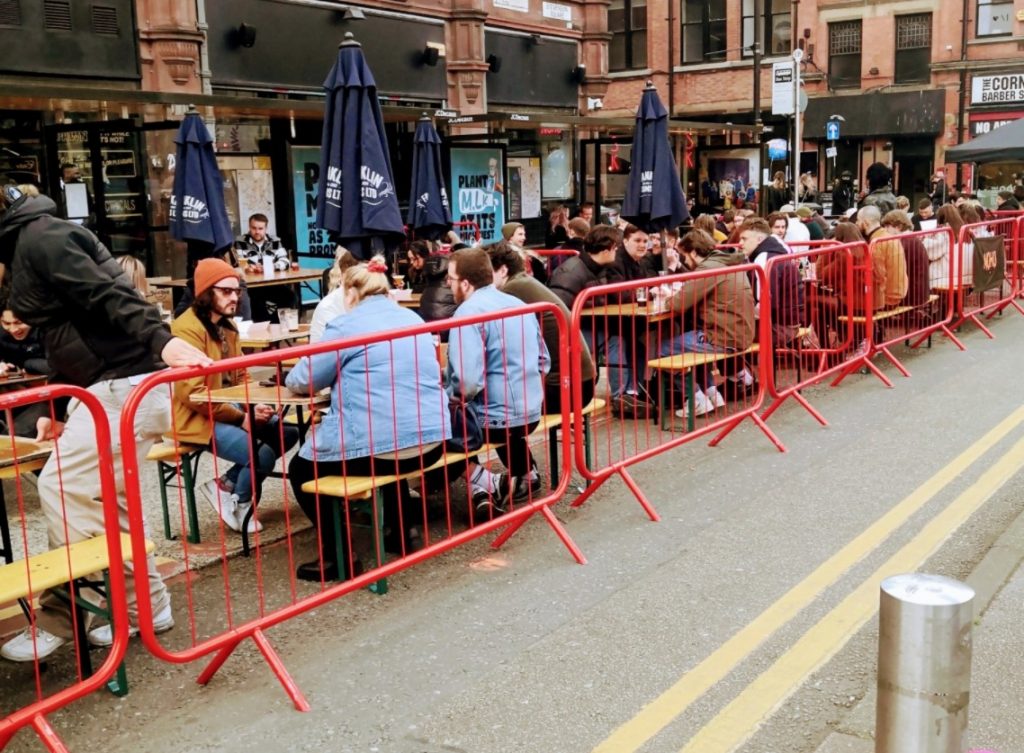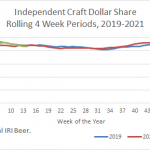Boy, did that fly by. April 2021. Lots of real world activity in my life even in the time of the enhanced Ontario lockdown. Vaccine jabbed, moved a kid from one city to another, annual income taxes submitted, another birthday… So things are looking up. Certainly could be worse. I could have concerns about the Truman Brewery Shopping Mall development as illustrated above. I know nothing about it. But the Evening Standard of London, England reports:
…heritage groups, residents and existing business owners have said the new plans are not in keeping with the area, the work could obscure views of the landmark’s Grade II listed chimney and there will be less need for office space post pandemic. Developers Old Truman Brewery said there has been “extensive consultation” with the council, residents, local workers and businesses and is a “high quality design with appropriate uses.”
Speak of the old and the brewing related, there was a fair bit of interesting char related to this article on an archaeological dig in Pembrokeshire, Wales:
Some 2000 years after Neolithic occupation began on the site, a stream became a focus of activity, where hot stones were used to generate steam or hot water, which resulted in the formation of a burnt mound. Water contained in the wooden trough was heated by stones placed in an adjoining hearth. While this process is well understood, the purpose of such features remains a matter of ongoing debate, with use for cooking, craft activities, brewing and saunas all suggested. Over 40 such mounds were found along the pipeline, with radiocarbon dating at one site indicating reuse over a remarkably long timespan of over 1500 years.
“Bronze-age Welsh brewery, I’d say” according to Martyn and “…the size of the troughs matches the batch sizes for farmers brewing for their own household…” says Lars. Barry: “I used to survey them… to calculate potential number of uses based on fracture rate of the stone used and the size of the mound…” Plenty of neato.
He’s the thing… as you may appreciate I have little interest in the alcopops labeled as “vodka soda” or even “craft beer” or even even “IPA” so you likely can guess how little I care about small-dose cannabis beverages. But there was this money quote in this article in Forbes this week which was fairly blunt:
“This is not a medical product. This is an alternative for White Claw,” Kovler says plainly. “No one under 35 likes beer anymore and calories and hangovers are unattractive. For us, it’s an obvious, forward-thinking idea… there is so much opportunity.”
Has anyone mentioned that cannabis comes with a hangover called crippling anxiety for many? No. Thought not. Anyway, it this were to kill off White Claw I suppose it would be something. But it won’t. Just another product in a pretty can on the shelf that really doesn’t have much to do with beer which is fine as I am well over 35 and don’t plan changing that in the near or medium future.
The Beer Nut celebrated his 16th bloggaversary this week, channeling Beckett. Less focused with a piece in Pellicle by ATJ on smoked beer or perhaps just the one sort of smoked beer called rauchbier or… well, when you reference both Game of Thrones and Lord of the Rings along with Prometheus, well, it all gets a bit… well… but it is important to note that Game of Thrones did actually make a beer:
This strong golden ale is co-fermented with pinot grigio and viognier grape juices, then bottle conditioned with Champagne yeast.
So this wasn’t that… as it were.
Stan issued another edition of Hop Queries this week and, as usual, shared some excellent insights into corners of the brewing trade few others write about – including this time stuff related to a “fuss that resulted from a few things Shaun Hill of Hill Farmstead Brewery said in New Zealand last month”:
“I’ve unfortunately had to brew with some of that Galaxy and destroyed batches of beer that tasted like pencil shavings because of it. At the point that something of highest quality is not being produced with transparency and things are being done for the sake of homogeneity, monoculture and, basically, just earning capital, things can get pretty far out of whack pretty quickly.”
Stan also shares the position of Hop Products Australia on the matter, contrasting the needs of the niche specialist brewers like Hill Farmstead and the general craft brewing trade stating a bit obliquely “consistency encourages a level of brand loyalty that forms the foundation for future growth.” I am not sure with whom I sympathize but Hill comes off as suggesting he should get first access to goods produced by others to literally cherry pick. Sounds like the folk who get to the grapes at the grocery store first, picking through the bunches leaving bruised fruit behind.
Lily Waite joined a trend I have noticed and referred to the craft beer trade as “we” describing an article on the craft beer trade… but she runs a brewery so it is all inside baseball. Good. And a great tl;dr ensued.
I found this an odd statement from the wine world:
No more Kiwi wine for me while New Zealand kowtows to China.
I presume Mr. Johnson is similarly concerned about the authoritarian tendencies of Viktor Mihály Orbán, Prime Minister of Hungary, home of Johnson’s beloved Tokaji. New Zealand has taken a path that is distinct from the battling one that Australia is taking in its trade war with China, a diplomatic row that includes malting barley:
Beijing hit Australian barley with a 73.6 per cent anti-dumping duty and a 6.9 per cent countervailing duty last May, in a move Canberra regards as politically motivated. Previously about half of Australia’s feed barley and 86 per cent of its malting barley, by value, was exported to China – but that trade has withered since Beijing’s taxes took effect.
Speaking of the politics of beverage alcohol, Chuck nailed it:
Senate Majority Leader Chuck Schumer trolled Donald Trump’s former adviser, Larry Kudlow, Sunday with a tweet mocking him for apparently failing to realize that all beer is “plant-based.” “Excited to be watching the Oscars with an ice cold plant-based beer. Thanks Joe Biden,” Schumer posted, along with a photo of himself sipping one in front of a TV.
Nice. That’s it for now. Enjoy your May Day. Wave a red flag and, while you are doing so, check out the weekly updates from Boak and Bailey mostly every Saturday, plus more with the weekly Beer Ladies Podcast, at the weekly OCBG Podcast on Tuesday (who marked their 100th episode with gratitude for all) and sometimes on a Friday posts at The Fizz as well. There is more from the DaftAboutCraft podcast, too. And the Beervana podcast. And sign up for Katie’s weekly newsletter, The Gulp, too. And check out the Atlantic Canada Beer Blog‘s weekly roundup. Plus follow the venerable Full Pint podcast. And Fermentation Radio with Emma Inch. There’s the AfroBeerChick podcast as well! And also look at Brewsround and Cabin Fever. And Ben has his own podcast, Beer and Badword – when he isn’t in hiatus as at the mo, more like timeout for rudeness. And remember BeerEdge, too. Plus a newcomer located by B+B: The Moon Under Water.




















